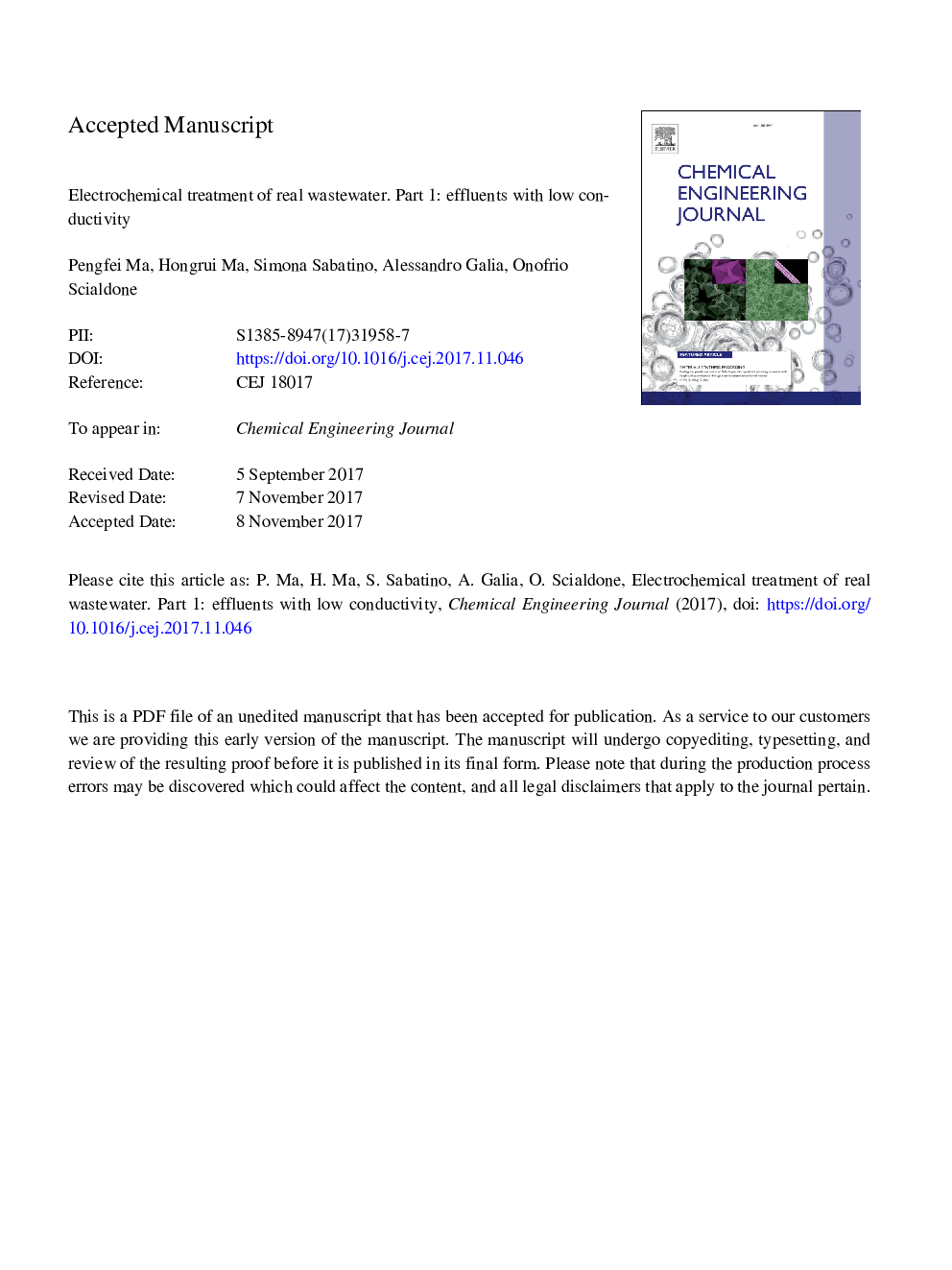| Article ID | Journal | Published Year | Pages | File Type |
|---|---|---|---|---|
| 6580587 | Chemical Engineering Journal | 2018 | 31 Pages |
Abstract
The treatment of a real wastewater characterized by low conductivity was performed by anodic oxidation at boron doped diamond (BDD) in both conventional and microfluidic cells. The electrolyses carried out in conventional cells without supporting electrolyte were characterized by very high TOC removals but excessively high energetic consumptions and operating costs. The addition of sodium sulphate, as supporting electrolyte, allowed to strongly reduce the cell potentials and consequently the energetic consumptions and the operating costs. However, under various operating conditions, the addition of Na2SO4 caused a lower removal of the TOC. The best results in terms of both TOC removal, energetic consumptions and operating costs (about 1â¯â¬/m3) were obtained using a cell with a very low inter-electrode distance (50â¯Âµm) with no addition of a supporting electrolyte.
Related Topics
Physical Sciences and Engineering
Chemical Engineering
Chemical Engineering (General)
Authors
Pengfei Ma, Hongrui Ma, Simona Sabatino, Alessandro Galia, Onofrio Scialdone,
